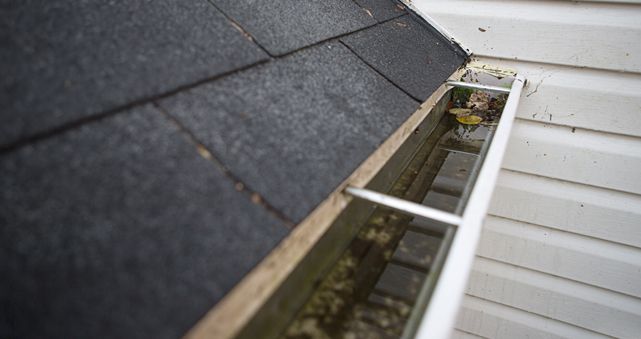
Rain gutter installed with T-Rex continuous hanger.
Following the installation, or during the inspection of eavestroughs, testing the system is key if you wish to ensure that your gutters work properly and avoid potential headaches.
Why Do We Need to Perform Water Tests?
During the inspection, the installer first assesses the slope of the gutter in order to confirm how rainwater flows. Stagnant water is the ideal environment for the proliferation of different types of insects. The slope of the gutter as water flows to the downspouts must thus be tilted enough to ensure a steady flow.

Your professional installer then makes sure that there are no signs of leaks. The most leakage-prone areas are obviously at the joints linking each section of the gutter system. For segmented gutters, these sections can be found in-between slabs, between the fascia and the gutter, as well as at the junction of the gutter and its corners.
Finally, your installer needs to confirm that the asphalt shingles allow rainwater to flow directly into the gutter. With time, some types of roof covering can become less rigid and divert water to the fascia, whereas it should flow directly into the gutter. If such is the case, your gutter installer can apply a strip of aluminum drip-edge to avoid water infiltration issues.
If you have any questions, make sure to visit our “Find an Installer” section at http://www.alu-rex.com/en/find-our-products and speak directly to a certified specialist who will provide you with any additional information you may need.